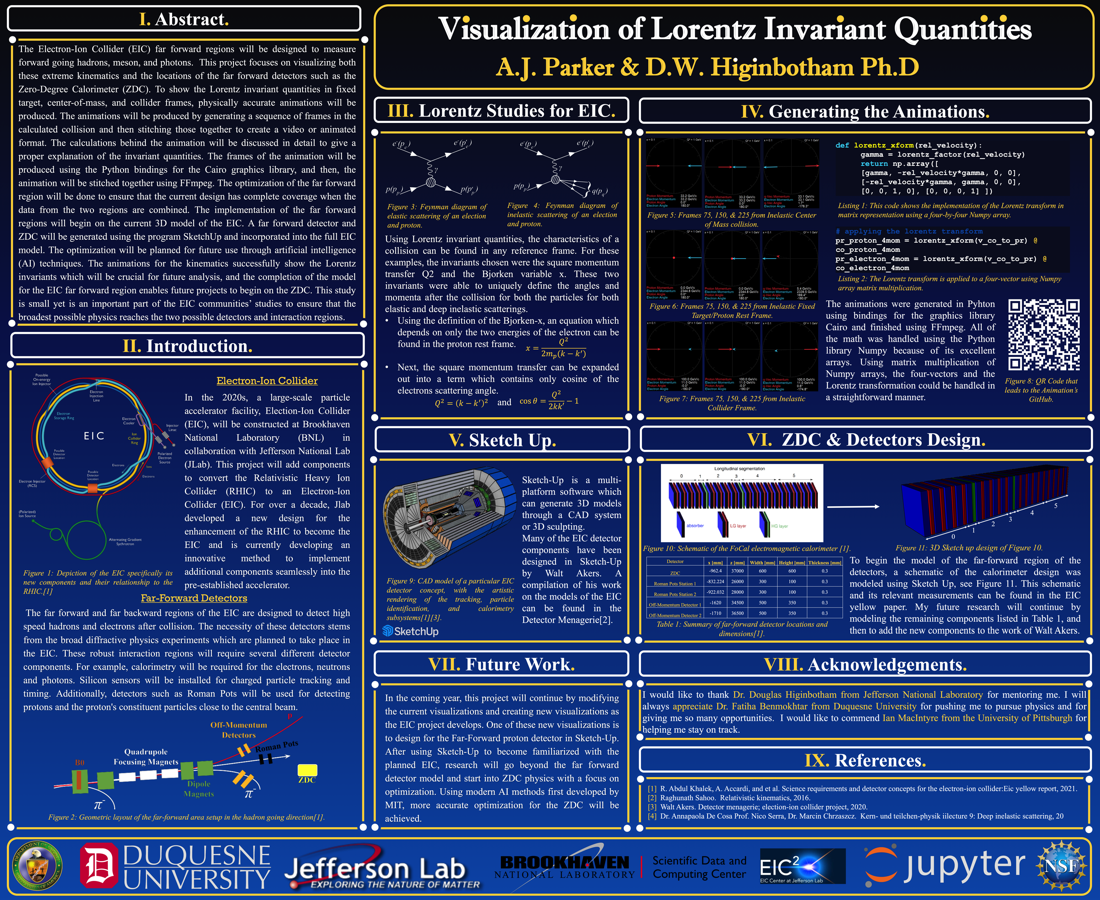Undergraduate Research at Jefferson Lab
Visualization of Lorentz Invariant Quantities
Student: Asia Parker
School: Duquesne University
Mentored By: Dr. Douglas Higinbotham
The Electron-Ion Collider (EIC) far forward regions will be designed to measure forward going hadrons, meson, and photons. This project focuses on visualizing both these extreme kinematics and the locations of the far forward detectors such as the Zero-Degree Calorimeter (ZDC). To show the Lorentz invariant quantities in fixed target, center-of-mass, and collider frames, physically accurate animations will be produced. The animations will be produced by generating a sequence of frames in the calculated collision, then stitching those together to create a video or animated format. The calculations behind the animation will be discussed in detail to give a proper explanation of the invariant quantities. The frames of the animation will be produced using the Python bindings for the Cairo graphics library, then the animation will be stitched together using FFmpeg. These animations will visualize the invariant quantities intuitively and will be used for presentations and demonstrations in order to help convey the physics. The optimization of the far forward region will be done to ensure that the current design has complete coverage when the data from the two regions are combined. The implementation of the far forward regions will begin on the current 3D model of the EIC. A far forward detector and ZDC will be generated using the CAD program SketchUp and incorporated into the full EIC model. The optimization will be planned for future use through artificial intelligence (AI) techniques. The animations for the kinematics successfully show the Lorentz invariants which will be crucial for future analysis, and the completion of the model for the EIC far forward region enables future projects to begin on the ZDC. This study is small yet is an important part of the EIC communities' studies to ensure that the broadest possible physics reaches the two possible detectors and interaction regions.
[Watch the presentation on YouTube]

Citation and linking information
For questions about this page, please contact Education Web Administrator.
